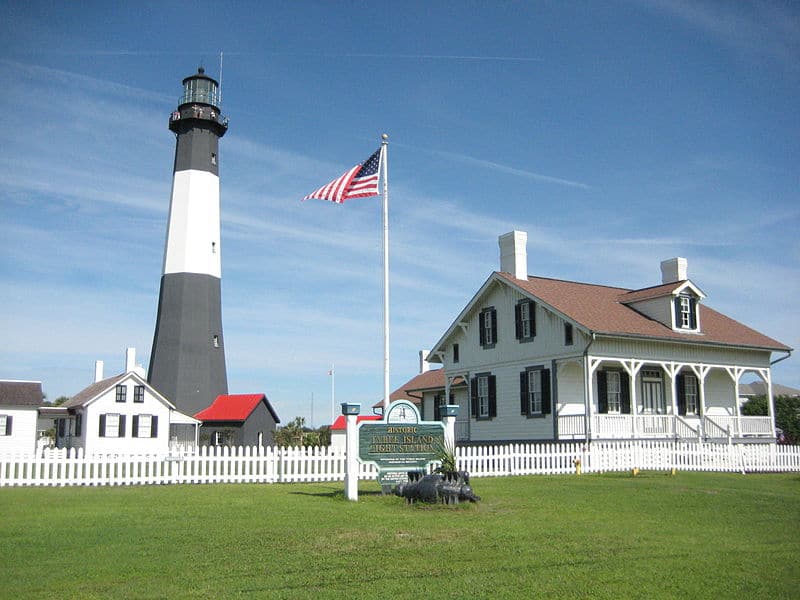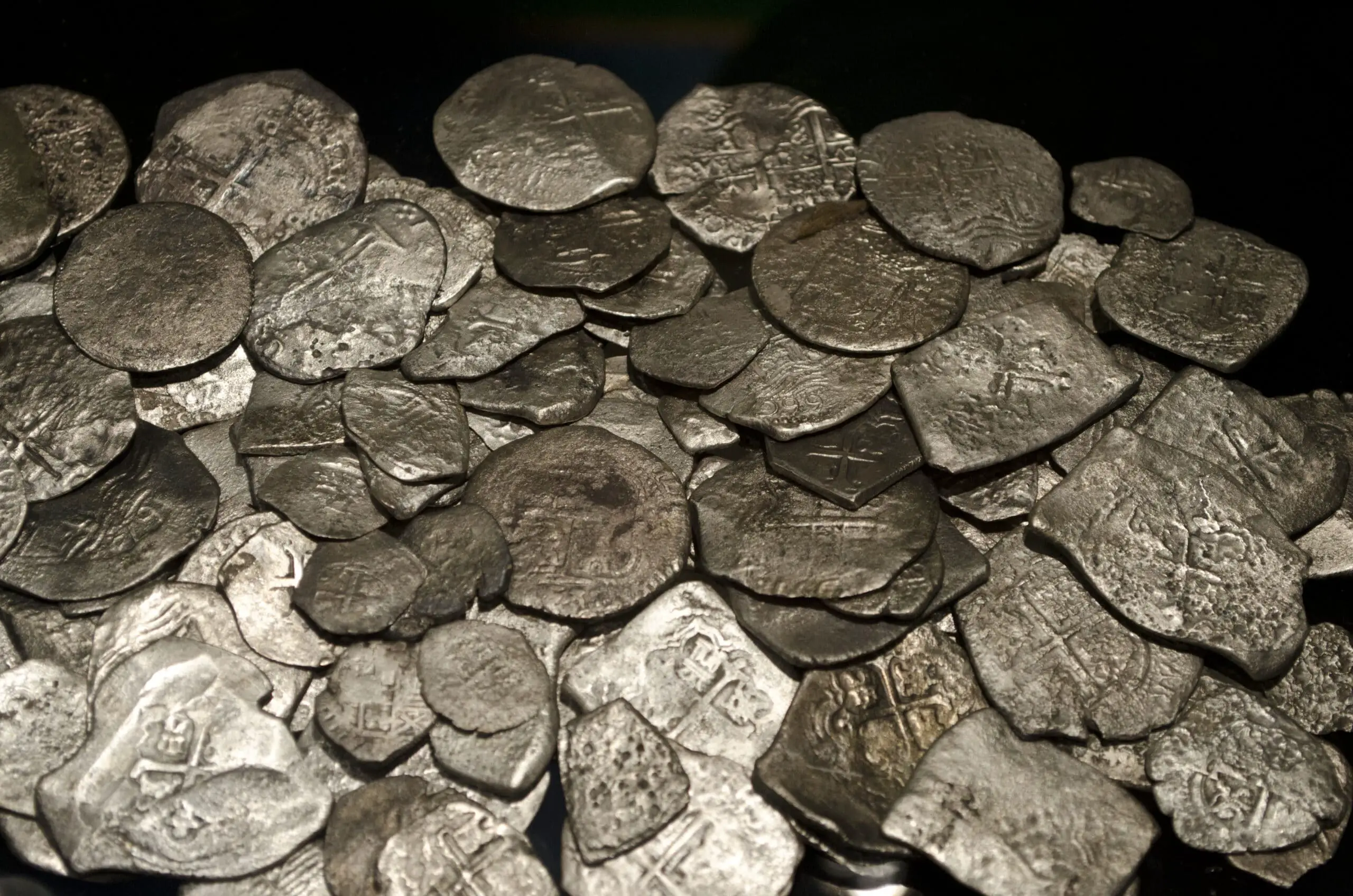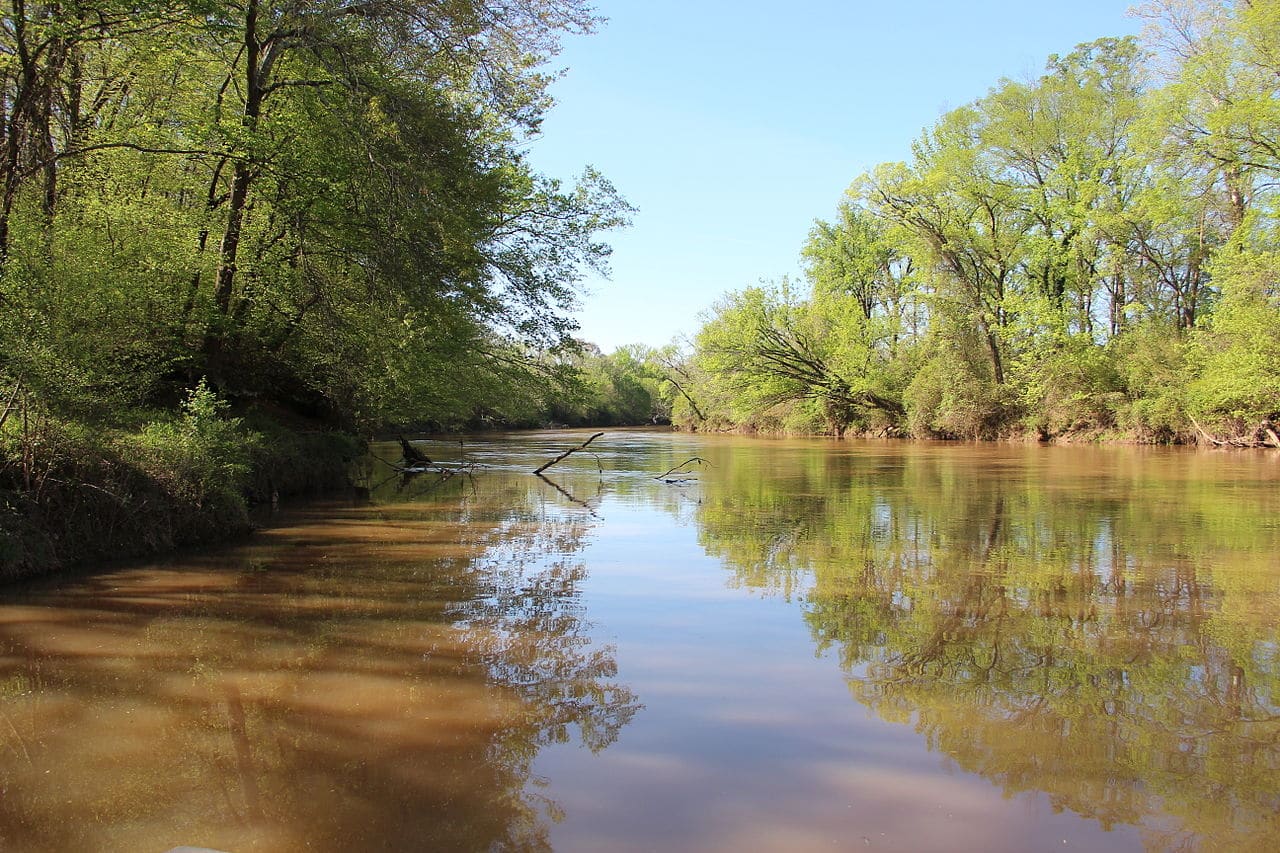Georgia was the 4th State to be admitted to the Union of the United States on January 2, 1788. With its long history, it’s no wonder that there would be lost treasure in Georgia. As matter of fact, Georgia’s history goes back even further when it was founded as a province in 1733 and then became a Royal Colony in 1752.
There are many stories of lost treasure that are associated with Georgia. From lost gold and silver mines to buried pirate and Indian treasures to people just burying their life’s wealth, you will find in this article, 13 lost treasures of Georgia.
I will be telling the story of those amazing treasures that are yet to be discovered. So sit back and enjoy as I bring you some of the most amazing lost treasures of Georgia!
13 Lost Treasures of Georgia
| TREASURE | AMOUNT | LOCATION |
|---|---|---|
| Pirate Treasure of Tybee Island | Spanish Coins & Artifacts | Shores of Tybee Island |
| Hidden Gold Bars on Face Mountain | 1,000 Gold Bars | In a cave on Face Mountian located near Varnell, Georgia |
| Spanish Silver Coins on St. Simons Island | Spanish Silver Coins | On the shores of St. Simons Island |
| Mulberry Grove Plantation | A cache of Gold Coins | Ruins of Mulberry Grove Plantation about 10 miles north of Savannah, Georgia |
| Lost Settlers Silver Mine | Silver Mine | Near Robertstown, Georgia |
| Lost Indian Silver Mine | Silver Mine | The mouth of Flat Creek, close to the Coosawatte River in Gilmer County Georgia. |
| Gold Bullion in the Etowah River | 200 Pound of Gold Bullion | Etowah River Northwest of Dahlonega, Georgia |
| Buried Indian Gold on the F.R. Groover Farm | $2.6 Million in Gold, Silver, and Jewelry | On the Banks of Bannister and Bruton Creeks on F.R. Grover’s old farmstead in Forsyth County Georgia! |
| Lost Gold of Dahlonega | $3 Million in Gold | Somewhere around the Etowah River Bluffs or on the Josephine Mine property near Dahlonega, Georgia |
| Two Buried Chests on the Fort Benning Army Base | $150,000 worth of gold | Fort Benning Army Base |
| Lost Treasure of Savannah | $15 million worth of treasure | Savannah, Georgia |
| Union Soldiers Buried Loot | $6 million worth of gold, silver, and jewelry | Near Lithonia, Georgia |
| Lost Wooden Kegs of Gold Coins | 12 wooden kegs filled with $400,000 in gold coins | 5 miles Southwest of Whitesburg, Georgia in Carroll County |
Pirate Treasure of Tybee Island

Tybee Island is said to have been frequented by pirates and maybe even Blackbeard in the 16th and 17th centuries. Legend has it that the pirates buried their treasure all over this small 3.36 square mile island. The pirates also used Tybee as a hiding place and freshwater source.
This small island is located about 18 miles from Savannah, Georgia at the mouth of the Savannah River.
The Euchee Indian Tribe first came to the island and then in 1520 Spanish Explorers landed there and named it Los Bajos. Tybee has a lot of interesting history behind it. Many shipwrecks lie in the waters around Tybee. Coins and artifacts from these lost ships have been reported to have been found on the beaches of Tybee!
If you get a chance take a trip out to Tybee Island. They even hold a Tybee Pirate Festival every year around October. And if you do go there don’t forget to bring along a metal detector and a good sand scoop so you can detect treasure along the Tybee Island beaches.
Hidden Gold Bars on Face Mountain
Face Mountian is located near Varnell, Georgia in Whitfield county. White settlers mined this area for gold. One day a group of miners was bringing their gold bars to the Dahlonega Mint and were robbed by some Cherokee Indians.
The Indians are said to have gotten away with 1000 gold bars and hid them in a cave on Face Mountain. The gold has not been found to this day.
So if you are ever in the area of Face Mountain in Georgia you might want to check out some of the caves in the area they might hold a fortune in lost gold bars!
Spanish Silver Coins on St. Simons Island

St. Simons Island lies on the Southeast coast of Georgia between Savannah, Georgia, and Jacksonville, Florida. The Spanish arrived on St. Simons and set up a mission called San Buenaventura de Guadalquini around the 1600s.
The Spanish occupied the island until they were forced out by pirates and the English in the late 1600s. It is said that on the beaches of St. Simon you can still find Spanish silver coins lost so many years ago.
A fortune awaits any would-be detectorist who visits St. Simon Island. Who knows you could be one of the lucky ones to find a genuine piece of eight on the shores there!
Mulberry Grove Plantation
Mulberry Grove Plantation is in ruins now but in its hay day, it was a beautiful well-maintained plantation where the main crop was rice. On this plantation, the cotton gin was invented by Eli Whitney.
After the revolutionary war, the plantation was abandoned and subsequently purchased by General Nathaniel Green who lived there until his death in 1786. George Washington wrote in his Journal that he visited General Greens, Widow, at the Mulberry Grove plantation.
Then in 1864 during the Shermans March to the Sea, the plantation was destroyed by the Union Army. It is said that the owners of the plantation at the time buried a cache of gold coins somewhere on the property before the soldiers arrived at the plantation.
Mulberry Grove is located 10 miles north of Savannah, Georgia. The only remnant left of the plantation is a bronze plaque where the plantation once stood. The gold could still be buried somewhere on the plantation ruins but since it’s probably private property you will want to ask permission before doing any metal detecting and digging.
Lost Settlers Silver Mine
Early settlers are said to have mined for silver around Robertstown, Georgia. Legend has it that one of those lost mines is somewhere within 5 miles of Robertstown in White County Georgia. This incorporated town was named after Charles Roberts who was the original owner of the town. Who knows a trek to Robertstown might get you rich!
Lost Indian Silver Mine
Legend has it that there is a lost Indian silver mine near the mouth of Flat Creek close to the Coosawatte River in Gilmer County Georgia.
Gold Bullion in the Etowah River

The Etowah River that lies Northwest of Dahlonega, Georgia has long been a gold panners paradise. But this treasure tale isn’t about placer gold that you can find in the river. It’s about an Indian woman who threw 200 pounds of gold bullion into the Etowah River when she was being expelled from her homeland.
Treasure hunters have scoured the bottom of the Etowah River in hopes of finding this gold but none has been found. So if you can scuba dive and have an underwater metal detector you might want to take a plunge into the Etowah River and try to find and recover the gold bullion that reportedly lies beneath!
Buried Indian Gold on the F.R. Groover Farm
When the Indians were made by the U.S. Government to go to their newly appointed Indian Territory most of the Cherokee of Georgia went quietly. But that wasn’t the case for the Red Bank Cherokee tribe of Georgia. The Red Bank tribe resisted and they decided it was a good idea to hid the gold that they had stored up in a safe place. They didn’t want the government soldiers getting their hands on it.
The Indians used the gold mostly for making jewelry and when the Whiteman came along they found out they could use it in trade. So over the years, the Red Bank tribe had stored up quite a bit of gold bullion and gold dust.
The Northern Cherokee Tribes of Georgia had a chief named Rising Fawn. Now he proposed that all the tribes bring their gold together in one place so that they could hide it from the soldiers. The Red Bank tribe distrusted Rising Fawn and especially distrusted a white subchief under him called Scudder and thought he was collaborating with the soldiers. The Red Bank tribe was afraid that when the Indians went to their appointed territories that Scudder would tell them where the gold was and they would lose it all.
The Red Bank Tribe Sticks to Their Own
So the Red Bank tribe didn’t go along with the plan. They finally decided that fighting with the soldiers would be of no use so they hatched a plan to bury their gold near Bruton and Bannister Creeks and come back later to retrieve it.
They put their gold in clay pots and buried it in specific locations along the creeks banks. They even placed markers in the area and scratched into granite rocks keys to the whereabouts of the buried gold. It’s estimated that the Red Bank Indians buried about 2.6 million dollars worth of gold in today’s money there.
Before they could retrieve their gold they were forced out by the soldiers never to return again. But that’s not where the story ends!
Over a Hundred Years Later
Fast forward about a hundred years to the year 1932 when three boys were playing near Bannister Creek. They came across the huge Granite rock that had the key to the whereabouts of the Indian gold. They had heard the stories of the lost Indian gold and they decided that this granite rock must be one of the markers.
They knew that Bannister Creek ran through the farm of F.R. Grover and that they would have to ask permission to dig for gold on his land. So the next day they went to ask permission without success. Mr. Grover denied them permission.
That night they returned to the farm to dig when it was dark. They rolled the granite rock to the side and started to dig. Not long after they hit a clay pot with their shovel. What was inside was amazing. The clay pot contained gold nuggets and jewelry estimated to be worth over $15,000 in 1932!
Unfortunately for the boys, Grover found out about them finding the gold on his land and he sued them for the gold. Grover won the lawsuit and the boys returned the gold.
The Rest of the Buried Clay Pots of Gold Are Still Buried
No one since has had any luck locating the other clay pots filled with gold. They could still be buried out there on the banks of Bannister and Bruton Creeks on F.R. Grover’s old farmstead in Forsyth County Georgia!
Lost Gold of Dahlonega
In 1864 General William Tecumseh Sherman‘s Union troops were descending on the town of Dahlonega. The townsfolk decided to hide their gold so they sought the help of a respected clergyman named Guy River to hide their $3 million in gold for them.
Mr. Rivers and some slaves hid the gold in one of two places. It’s either hidden somewhere around the Etowah River Bluffs or on the Josephine Mine property which is now underwater. Guy Rivers died of a heart attack shortly after hiding the gold and the slave had run away never to be seen again.
To this day the townspeople’s lost gold has never been recovered and could still be waiting for discovery in those two places in Dahlonega, Georgia!
Two Buried Chests on the Fort Benning Army Base
It’s reported that a farmer named Whitney buried two chests on his farm in 1860. The two chests contained $150,000 worth of gold. The farm is now located on the Fort Benning Army Base.
In 1920 an Army officer found one of the chests in a ravine but the other chest has not been located and still is buried somewhere on that Army base in Southern Georgia!
Lost Treasure of Savannah

Savannah, Georgia was another town plundered by the Yankees in 1864. Before Sherman’s army arrived the townspeople buried their valuables in various places throughout the city. It is estimated that there is approximately $15 million worth of treasure buried throughout the city.
Much of the treasure was never recovered because of the mass destruction the city of Savannah suffered during the Sherman March.
Union Soldiers Buried Loot
It’s reported that Union Soldiers stole about $6 million worth of gold, silver, and jewelry from Atlanta, Georgia during a siege there. It is said that they buried it near Lithonia, Georgia ten miles east of Atlanta. The soldiers were caught and hung for the theft. They never revealed the exact location of the treasure and it could still be buried near Lithonia, Georgia!
Lost Wooden Kegs of Gold Coins
Supposedly there are 12 wooden kegs filled with $400,000 in gold coins buried near the ruins of an old homesteader’s cabin on the old McIntosh Trail near Chattahoochee River. This money was to be a payment from the United States to the Indians for a huge amount of land.
Not sure how the money got into the wrong hands but somehow it did and is still missing to this day and is said to be located about 5 miles Southwest of Whitesburg, Georgia in Carroll County.
Final thoughts
Well, now you know about the 13 lost treasures of Georgia. Like most treasure tales they are legends and stories told through the centuries but many of them have rings of truth to them. This is only 13 of those tales there are many more treasure stories that come from the state of Georgia. If you would like to learn more about research for treasure hunting and metal detecting check out this book by that title.
I hope you enjoyed this article and if you have any questions or comments feel free to leave them below. Until next time Happy Treasure Hunting!

Yes I have a question I found a rock that has some unique features and you can reach me at 4709300948
The gold in Whitesburg story is wrong. Chief McIntosh was initially paid a 1% down payment (about $20,000 at the time) in gold coins. This took place at Indian Springs, GA. When his treachery was found out, he was chased on horseback to his home in Whitesburg. He crossed the river at his ferry and when he was captured and killed at his home in what is now the McIntosh Reserve just south of Whitesburg, the gold was nowhere to be found. An old friend of mine, who’s now passed away, was a big relic hunter in the area, he had an amazing collection of Indian and Civil War relics he had found over the years. He grew up in the area and he remembered when he was a kid the river would sometimes get extremely low in the summer. He remembered a cave in the riverbank that was under a large granite boulder that was very close to where the McIntosh ferry crossed. In the granite over the cave was a vein of marble in the shape of a turkey’s foot. He always thought that that was where McIntosh stashed the gold where he could come back later and retrieve it. Mahaley Lancaster, who was a local fortune teller, psychic, or as she call herself, “an Oracle of the ages”, who was in the book “Murder in Coweta County” told my wife’s grandfather about a cache of gold buried along the river under a turkey’s foot. He was superstitious and never went t look for it. People snooping around the area have had warning shots fired by the landowner. You can see the rock and the turkey’s foot formation from the river.
tell me more about it